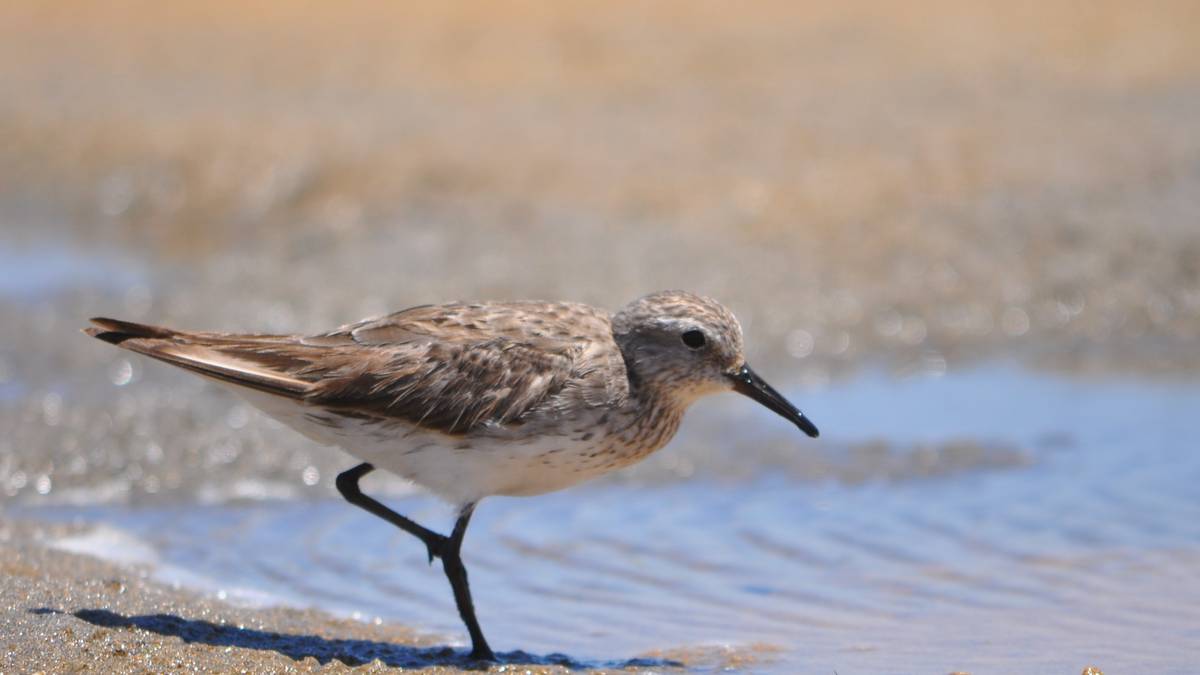
The last time a white-rumped sandpiper (calidris fuscicollis) was spotted in NSW was in November 1977 near Pitt Town.
Ornithologist Joy Pegler said the bird has been caught up in the wrong migratory fly way ending up on the Australian coastline from Alaska.
"All the twitchers are rushing to see it," she said.
"It's only a little thing and it has flown such a long way. It's really very amazing.
"The bird is very rarely seen in Australia at all, so this has a lot of enthusiasts very excited."
The bird has one of the longest migration routes of any American bird, breeding in arctic Canada and wintering in southern South America.
Southbound migrants fly over the Atlantic Ocean from north-eastern North America to South America then gradually move south-east along the coast before turning inland to go across the Amazon Basin. This takes about one month.
Ms Pegler said the bird had most likely been caught up with the large groups of birds migrating through the east Asian/Australasian migration route.
"This time of the year we see a lot of shorebirds migrate to Lake Wollumboola to take advantage of its unique characteristics," she said.
"It has a great supply of vegetation which supports food supply and roosting areas.
"This little bird though won't settle to breed here and probably won't stick around for much longer."
Narelle Wright from Culburra Beach, a volunteer with National Parks and Wildlife, said the bird was first spotted in Shoalhaven Heads about five days ago.
"These little birds have been clocked flying at 80km/h," she said.
"This bird appears to be on its own and has been sticking to itself.
"It's still eating and seems happy so it should be off soon to South America."
Ms Wright said bird watchers have been arriving at from Melbourne, the Gold Coast, Central Coast and as far afield as Perth to catch a glimpse of the bird before it leaves Australia's shores.



Comment: Other similar recent reports of birds completely losing their way across the Northern Hemisphere: Rare goose from northern Asia turns up in Suffolk, UK
Rare Eurasian kestrel appears in Nova Scotia, Canada
Another completely lost avian species: Couch's Kingbird flies from southern Texas to New York
Warbler that should be wintering in western Mexico turns up in Louisiana
Bean goose from Eurasia takes a wrong turn and winds up on the Oregon Coast
Four lost flamingos fly NORTH for the winter and turn up in Siberia
Wrong place, wrong time: European robin turns up thousands of miles away in China
Rare bird from Mongolia turns up in Wakefield, UK
Wrong time, wrong place: Rare bird found in Barrie, Canada